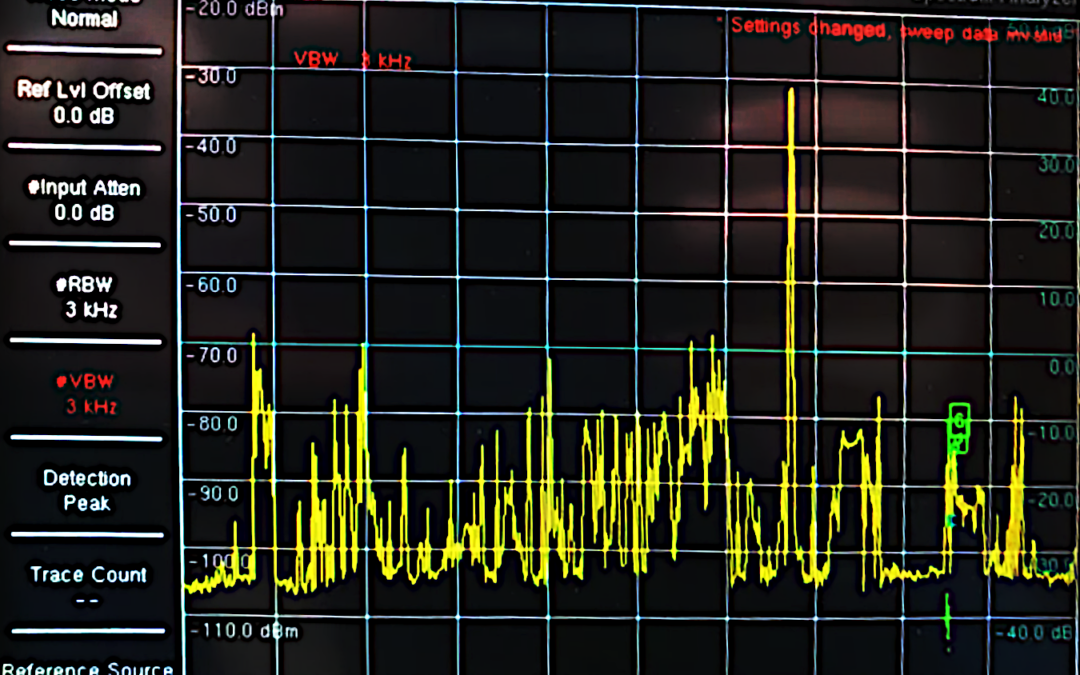Radio interference occurs when a nearby source of radio waves disrupts the reception of signals from a distant transmitter. It can cause audible static and distortion of sound, as well as block or attenuate signals and reduce the amount of data that can be transmitted. In order to effectively combat radio interference, it is important to understand the nature and sources of interference, and the techniques and technologies that can be used to track and mitigate it.
Understanding Radio Interference
Radio interference is caused by other signals either on the same frequency or an adjacent frequency. It occurs when a local or stronger transmitter broadcasts a signal that is strong enough to enter the receiver at a strength equivalent to or higher than the desired signal. Interference can also occur when multiple transmitters are broadcasting on the same frequency band, resulting in interference between the signals. Interference can also be caused by reflections and multi-path effects, when the transmitted signal is scattered in different directions due to objects such as metallic objects, buildings, and deep canyons.
Identifying Radio Interference
Radio interference can be identified by listening to the transmitted signal. Static, distortion, and reduced signal strength are all indicators of interference. It is also possible to measure interference levels using a spectrum analyzer or SDR (software-defined radio). This can help to identify the frequency of the interfering signal, as well as the strength of the signal.
Distinguishing Different Sources
The source of interference can often be distinguished by the characteristics of the signal. For example, signals from digital transmitters will have a characteristic noise floor, while analog signals will have a more irregular pattern. Additionally, signals from high-power sources such as broadcast stations, cell towers, and microwave relays will be much stronger than signals from low-power sources such as consumer electronics.
Analyzing Interference Patterns
Once the source of interference has been identified, it can be useful to analyze the interference patterns in order to identify any possible sources of interference. This can be done by recording the interference signal and analyzing it using a spectrum analyzer. This can help to identify narrowband signals, as well as any other patterns that may indicate a specific source of interference. We also use spectrum analyzers to help identify the frequencies and characteristics of the interference signals.
Locating Interference Sources
Once the source of interference has been identified, it can be useful to locate the source of the interference in order to attempt to mitigate it. This can be done using a variety of techniques, such as direction finding and triangulation. Direction finding involves using directional antennas to determine the direction of the interference source, while triangulation involves using multiple antennas in order to calculate the position of the source.
Evaluating Interference Mitigation
Once the source of interference has been identified and located, it is important to evaluate the effectiveness of any proposed mitigation techniques. This can be done by measuring the signal strength of both the interfering signal and the desired signal before and after the mitigation technique is applied.
Mitigating High-Level Sources
Interference from high-level sources such as broadcast stations and cell towers can often be mitigated through the use of shielding and filtering. Shielding involves using materials such as metal to absorb and block the interfering signal, while filtering involves using filters to reduce or eliminate the interfering signal.
Using Countermeasures to Reduce Interference
It is also possible to reduce or eliminate interference from low-power sources such as consumer electronics through the use of countermeasures. These include signal shielding, frequency shifting, and the use of antenna separators. Signal shielding involves using materials such as metal to absorb and block the signal, while frequency shifting involves changing the frequency of the signal in order to avoid interference. Antenna separators involve using multiple antennas in order to separate interfering signals.
Radio interference can be a significant problem for radio systems, as it can interfere with the reception of signals and reduce the amount of data that can be transmitted. In order to effectively combat radio interference, it is important to understand the nature and sources of interference, and to use techniques and technologies such as direction finding, filtering, and shielding to track and mitigate it. With the right techniques and technologies, it is possible to effectively reduce or eliminate interference and improve radio performance.
